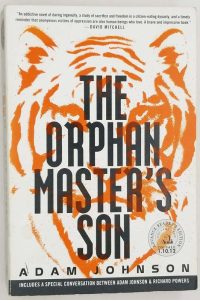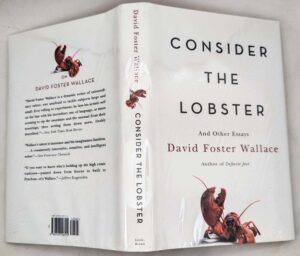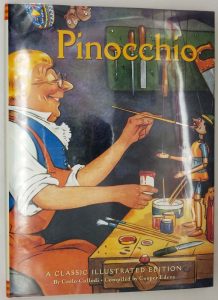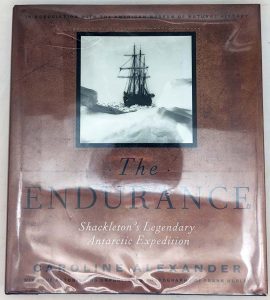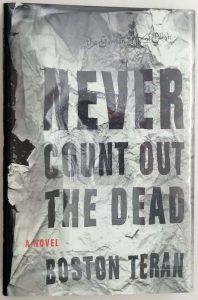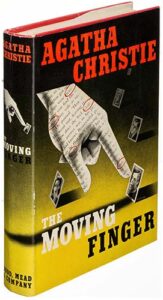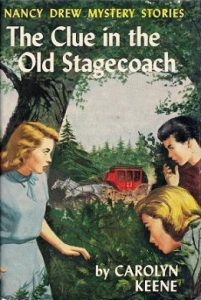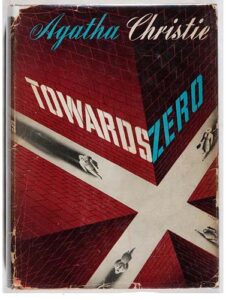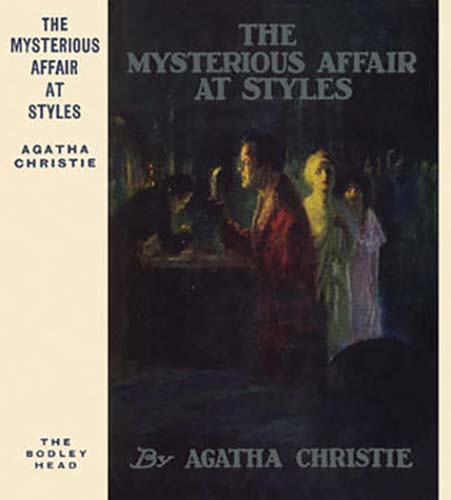
The Mysterious Affair at Styles is a detective novel by British writer Agatha Christie. It was written in the middle of the First World War, in 1916, and first published by John Lane in the United States in October 1920 and in the United Kingdom by The Bodley Head (John Lane’s UK company) on 21 January 1921. The US edition retailed at $2.00 and the UK edition at seven shillings and sixpence (7/6). The book is the first of thirty-three full-length novels featuring her detective Hercule Poirot.
Styles was Christie’s first published novel. It introduced Hercule Poirot, Inspector (later, Chief Inspector) Japp, and Arthur Hastings. Poirot, a Belgian refugee of the Great War, is settling in England near the home of Emily Inglethorp, who helped him to his new life. His friend Hastings arrives as a guest at her home. When Mrs Inglethorp is murdered, Poirot uses his detective skills to solve the mystery.
The book includes maps of the house, the murder scene, and a drawing of a fragment of a will. The true first publication of the novel was as a weekly serial in The Times, including the maps of the house and other illustrations included in the book. This novel was one of the first ten books published by Penguin Books when it began in 1935.
Agatha Christie began working on The Mysterious Affair at Styles in 1916. The character of Hercule Poirot was inspired by her experience working as a nurse, ministering to Belgian soldiers during the First World War, and by Belgian refugees who were living in Torquay.
The manuscript was rejected by Hodder and Stoughton and Methuen. Christie then submitted the manuscript to The Bodley Head. After keeping the submission for several months, The Bodley Head’s founder, John Lane, offered to accept it, provided that Christie make slight changes to the ending. She revised the next-to-last chapter, changing the scene of Poirot’s grand revelation from a courtroom to the Styles library. (Some modern editions of the published book also include an appendix with the original “unpublished” alternative ending set in the courtroom. It is very similar to the final version in content, with dialogue from other characters replaced by dialogue from the Judge and Sir Ernest Heavywether.) Christie later stated that the contract she signed with Lane was exploitative.
The Mysterious Affair at Styles launched Christie’s writing career. Christie and her husband subsequently named their house “Styles”.
Hercule Poirot, who first appeared in this novel, would go on to become one of the most famous characters in detective fiction. Decades later, when Christie told the story of Poirot’s final case in Curtain, she set that novel at Styles.
Plot Summary
[SPOILER ALERT]
On the morning of 18 July, the household at Styles Court wakes to the discovery that Emily Inglethorp, the elderly owner, has died. She had been poisoned with strychnine. Arthur Hastings, a soldier from the Western Front staying at this country manor as a guest on his sick leave, ventures out to the nearby village of Styles St Mary to enlist help from his friend Hercule Poirot. Emily was a wealthy woman. Her household includes her husband, Alfred Inglethorp, a younger man she recently married; her stepsons (from her first husband’s previous marriage) John and Lawrence Cavendish; John’s wife Mary Cavendish; Cynthia Murdoch, the daughter of a deceased friend of the family; and Evelyn Howard, Emily’s companion.
Poirot learns that, on Emily’s death, John is to inherit the manor property, in accordance with his father’s will. However, her money will be distributed according to her own will, which she changes at least once a year; her most recent will favours Alfred, who will now inherit her fortune.[12] On the day of the murder, Emily had been arguing with someone, suspected to be either Alfred or John. She had been quite distressed after this and apparently made a new will. No one can find any evidence of this new will. Alfred left the manor early that evening and stayed overnight in the village. Meanwhile, Emily ate little at dinner and retired early to her room, taking her document case with her; when her body was found, the case had been forced open. Nobody can explain how or when the poison was administered to her.
Inspector Japp, the investigating officer, considers Alfred to be the prime suspect, as he gains the most from his wife’s death. Poirot notes that Alfred’s behaviour is suspicious during the investigation. He refuses to provide an alibi and openly denies purchasing the strychnine in the village, despite evidence to the contrary. Although Japp is keen to arrest him, Poirot intervenes by proving he could not have purchased the poison; the signature for the purchase is not in his handwriting. Suspicion now falls on John, next to gain from Emily’s will and without an alibi for the murder. Japp soon arrests him: the signature for the poison is in his handwriting; a phial that contained the poison is found in his room; a false beard and a pair of pince-nez identical to Alfred’s are found within the manor.
Poirot’s investigations exonerate John of the crime. He establishes that the murder was committed by Alfred Inglethorp, with aid from his cousin Evelyn Howard. The pair pretended to be enemies but were romantically involved. They added bromide to Emily’s regular evening medicine, obtained from her sleeping powder, making the final dose lethal. The pair then left false evidence that would incriminate Alfred, which they knew would be refuted at his trial; once acquitted, he could not be tried for the crime again if genuine evidence against him was found, under the law of double jeopardy. The pair framed John as part of their plan; Evelyn forged his handwriting, and the evidence against him was fabricated.
Poirot explains that he prevented Japp from arresting Alfred because Poirot could see that Alfred wanted to be arrested. Thanks to a chance remark by Hastings, Poirot finds a letter in Emily’s room that detailed Alfred’s intentions for Evelyn. Emily’s distress on the afternoon of the murder was because she had found this letter in Alfred’s desk while searching for stamps. Emily’s document case was forced open by Alfred when he realised she had the letter. He then hid the letter elsewhere in the room to avoid being found with it.
Publication history
- 1920, John Lane (New York), September 1920, Hardcover, 296 pp
- 1920, Ryerson Press, Toronto, October 1920, Hardcover
- 1920, National Book Company, Hardcover, 296 pp
- 1921, John Lane (The Bodley Head), 21 January 1921, Hardcover, 296 pp
- 1926, John Lane (The Bodley Head), June 1926, Hardcover (Cheap edition – two shillings), 319 pp
- 1931, John Lane (The Bodley Head), February 1931 (As part of the Agatha Christie Omnibus along with The Murder on the Links and Poirot Investigates), Hardcover, Priced at (7/6); a cheaper edition at five shillings was published in October 1932
- 1932, John Lane (The Bodley Head), July 1932, Paperback (ninepence)
- 1935, Penguin Books, 30 July 1935, Paperback (sixpence), 255 pp
- 1945, Avon Books (New York), Avon number 75, Paperback, 226 pp
- 1954, Pan Books, Paperback (Pan number 310), 189 pp
- 1959, Pan Books, Paperback (Great Pan G112) 1961, Bantam Books (New York), Paperback, 154 pp
- 1965, Longman (London), Paperback, 181 pp
The novel received its first true publication as an eighteen-part serialisation in The Times newspaper’s Weekly Edition (aka The Times Weekly Edition) from 27 February (Issue 2252) to 25 June 1920 (Issue 2269). This version of the novel mirrored the published version with no textual differences and included the maps and illustrations of handwriting examples used in the novel. At the end of the serialisation an advertisement appeared in the newspaper, which announced, “This is a brilliant mystery novel, which has had the unique distinction for a first novel of being serialised in The Times Weekly Edition. Mr John Lane is now preparing a large edition in volume form, which will be ready immediately.” Although another line of the advertisement stated that the book would be ready in August, it was first published by John Lane in the United States in October 1920 and was not published in the UK by The Bodley Head until the following year.
The Mysterious Affair at Styles later made publishing history by being one of the first ten books to be published by Penguin Books when they were launched on 30 July 1935. The book was Penguin Number 6.
The Mysterious Affair at Styles – First Edition Book Identification Guide
The books are listed in the order of publication. While the majority of Agatha Christie’s books were first published in the UK. There are many titles that were first published in the US. The title of the book may differs from the UK edition in some cases.
| Year | Title | Publisher | First edition/printing identification points |
|---|---|---|---|
| 1920 | The Mysterious Affair at Styles | John Lane & Co., NY, MCMXX | First edition. Date on the title & copyright page matches. No statement of later printings. Cream cloth lettered in dark green. ALSO: National Book CO., NY, [1922-1923]. Second US edition. States 1920 on the copyright page. Same title page as the John Lane edition. Cream cloth lettered in green. ALSO: Dodd, Mead & Co, 1926. Third US printing. Green cloth lettered in red. Date on the title & copyright page matches. No statement of later printings. Uses the same dust jacket cover art as the first US/UK edition. ALSO: Dodd, Mead & Co,1927. Fourth US printing. Stated 1920 on the cc. ALSO: Grosset & Dunlap, [1927]. Fifth US printing. Stated "Fourth Edition March 1927" on the copyright page. |
| 1920 | The Mysterious Affair at Styles | Ryerson Press, Toronto, 1920 | First Canadian Edition. Date on the title & copyright page matches. No statement of later printings. Tan cloth lettered in black. |
| 1921 | The Mysterious Affair at Styles | The Bodley Head, London. [1921] | First English edition. "First Published in 1921" stated on the copyright page. No statement of later printings. Decorative tan cloth, lettered in black. |
Note about Book Club Editions (BCE) and reprints:
UK: You can see statements of later reprint dates or of book club on the copyright page.
US: The US reprint publishers usually use the same sheets as the first edition and are harder to identify by looking at the title page or the copyright page. One may identify a BCE by looking at the DJ, which doesn’t have a price on top of the front flap and a “Book Club Edition” imprint at the bottom. If the dust jacked is clipped at both the top/bottom of the front flap. You can safely assume it’s a BCE . If the book is missing the dust jacket. Later BCE editions can be identified by its plain boards, while first printings are issued in quarter cloth.
Please refer to the gallery for detailed images of true first edition bindings and dust jackets.
The Mysterious Affair at Styles – First Edition Dust Jacket Identification Guide
First edition bindings and various dust jacket printings identification.
